Even though almost all of the spiders in Connecticut are venomous to some degree, the only two that most people need worry about are the black widow spider (Latrodectus spp.) and the brown recluse spider (Loxosceles reclusa). While any spider bite can cause a painful reaction if you are allergic, most bites can be treated by washing the area with soap and water and applying an antibiotic cream or ointment. Bites from the black widow and brown recluse should be treated by a medical professional.
Identifying Connecticut Spiders
Connecticut is in the middle of the northern black widow's (Latrodectus variolus) habitat and at the northernmost edge of the southern black widow's (Latrodectus mactans) domain, making it possible to find both species in the state. Both species similar, with the adult females being about 1/2 inch long and jet black, featuring the distinctive red abdominal "hourglass" black widows are known for. On southern black widows, the red hourglass shape may appear as red dots or spots rather than a distinctive hourglass. Males and young females don't bite people, so they're not an issue.
The brown recluse spider is not native to Connecticut but may hitch a ride in produce and other shipments. The brown recluse is about 1/2 inch long and has a marking on its back that looks like a violin. The spider's entire body, including the legs, is about the size of a quarter.
Habitat
Both black widow and recluse spiders are solitary creatures who prefer undisturbed crevices and small spaces. In the garden, you may find them hiding under rocks, wedged in cracks of stone walls or fences, in wood piles or hanging out in rarely used garages and sheds. The best way to avoid contact with both spiders at home is to avoid putting your hands anywhere that you can't see. Wear long pants, long sleeves and gloves if you will be working in an area that's not frequently used.
Bite Symptoms
When they happen, the bites of both spiders may feel like a pin prick but you might not feel anything. Redness and swelling around the bite are common with both spiders as is discomfort around the bite area. For some, this reaction may be the only symptoms. Others may have more severe reactions to the venom.
Possible reactions to black widow bites include:
- Trouble breathing
- Muscle cramps and twitching, often in the abdominal muscles
- Headache
- Profuse sweating
- Restlessness and anxiety
- Nausea and vomiting
Black widow bites can also cause high blood pressure, which you may not be aware of unless a doctor examines you. Pregnant women may experience contractions or premature labor. Seizures may also occur. If they do, call 911 and get immediate medical attention.
Symptoms of brown recluse bites are:
- Chills and fever
- Profuse sweating
- Nausea
- Blister or purple discoloration near the bite
- Ulceration near the bite
- Jaundice
- Bloody urine
In extreme cases, brown recluse spider bites can cause coma, kidney failure and seizures, all of which require immediate medical attention.
First Aid
Stay calm if you're bitten by a spider because panic only spreads venom more quickly. Bites inject only a small amount of venom and are uncomfortable but are rarely lethal. As of 2015, there had not been a black widow-related death in the U.S. for more than a decade.
Treatment for both black widow and brown recluse spider bites is the same. Wash the bite with soap and hot water, then apply ice to the bite and elevate it, leaving the ice on for 10 minutes and then taking it off for 10 minutes. Repeat 10 minute intervals of ice and rest until you reach medical help. Seek immediate medical treatment.
Related Articles

Poisonous Household Spiders in ...

Cream for Razor Bumps on Black Skin
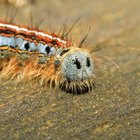
List of Michigan Caterpillars

How to Heal an Inflamed Bikini Area

How to Devein Tiger Prawns
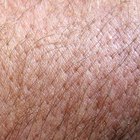
How to Shave Skin Moles

A Wart on the Shoulder

Home Remedy for a Red Wasp Sting

What Are the Dangers of Men's Brazilian ...

Treatment of Razor Bumps for Black Women
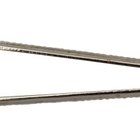
How to Remove Hair Follicles to Prevent ...

Swollen Lymph Nodes in Horses

How Rare Is a Black Pearl?

Fraxel Laser Treatment Dangers
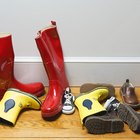
How to Repair Rubber Boots

Hydroquinone & Dark Circles

How to Keep Shoes From Rubbing the Heel

Hyperpigmentation and Shaving

How to Dye Black Fabric Green
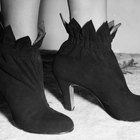
How to Restore Black Suede
References
Writer Bio
Writing professionally since 2008, Michelle Miley specializes in home and garden topics but frequently pens career, style and marketing pieces. Her essays have been used on college entrance exams and she has more than 4,000 publishing credits. She holds an Associate of Applied Science in accounting, having graduated summa cum laude.